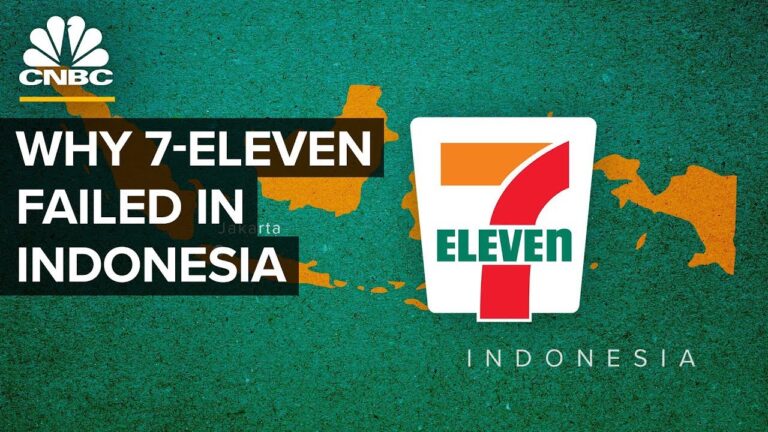In this Article, We Discuss 7-Eleven Failure in Indonesia, Conclusion and the Lessons Learnt from this Failure.
“Indonesia’s first 7-Eleven opened in 2009 and became a popular hangout spot for consumers. At their peak in the Southeast Asian country, they numbered 190 stores, offering free Wi-Fi and a seating area for guests while selling fresh local meals and traditional 7-Eleven snacks like the Slurpee. Despite the chain’s popularity, the franchisee, PT Modern International, shuttered all remaining 161 stores there in 2017.” – CNBC
Why 7-Eleven Failed in Indonesia (Reuters Report)
When 7-Eleven opened its first Indonesian outlets in 2009, it made a bet that hip cafe-like versions of its globally recognized convenience stores would pull in hordes of young, urban consumers.
The strategy worked: the franchise quickly became known as a hot place to hang out, drink signature Slurpees and use free wifi. What failed was a plan to attract repeat customers willing to spend money.
In addition to thrifty Indonesian consumers, industry participants also blame intense competition and a 2015 nationwide ban on alcohol sales at mini-markets for the franchise’s struggles.
Consumers also tended to associate 7-Eleven’s competitors such as Indomaret and Alfamart with daily necessities, which served as a buffer against the alcohol sales ban. 7-Eleven’s reach was limited to Jakarta and not spread across the entire country.
Reuters
Conclusion : 7 Reasons why 7-Eleven Failed in Indonesia
- Lack of Understanding of the Indonesian Market and its Dynamics. Indonesian Market is very different as Compared to a Scandinavian Market and would have required a much deeper understanding and detailed study with Research about Customers and Competitors. Some big Strategic blunders were made. Brand Power alone was not Sufficient to make 7-Eleven Succeed in a Fragmented Indonesian Market.
- Lack of Customer Retention (for Daily Purchase Needs, as it became more of a Hangout Spot for young Adults who would Catchup once in a while).
- Low Customer Profitability and Low Customer Lifetime Value (as the Customers would just spend on Slurpees or a Drink while using Free Wifi) and would consume or buy other basic needs stuff from the other Local Supermarkets or Other Competitors.
- Alcohol Sales Ban at Mini Markets (Alcohol is very popular among young adults, so lack of that drove the main customer segment to their Competitors).
- Lack of Competitive Pricing in comparison to local Discounters & Supermarkets.
- Huge Presence of Competitor Stores offering a wide Array of Basic Need Goods.
- Lack of Understanding of Local Consumer Purchase Behaviour and Spending Pattern.
All these remained big challenges for 7-Eleven that remained unaddressed during its tenure in Indonesia and subsequently led to its demise.
Lessons Learnt
- Repeat Customers and Regular Customers are equally important if not more important for Business Expansion than Acquisition of New Customers.
- Brand Power alone is not Sufficient to make any Organisation Succeed in Fragmented Markets without understanding Nuts and Bolts of that Market.
- Day to Day Needs are more relevant for thrifty Customers to make a repeat purchase.
- Customer Loyalty Programs and Promotions need a special attention in Intensely Competitive Markets
- Competitive Pricing and Adaptation to Local Customer’s Purchase Behaviour is a Key Strategy where there is a strong Competition from the Established Players (or where you can be outnumbered)


